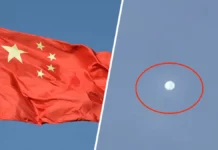The introduction of Axle load form was a spark that started in 2018, leading to declining in sales volume of the commercial sector has turned into a firestorm in 2019 affecting five major segments of the automotive industry including commercial vehicles, passenger cars, two-wheelers, tractors, and construction equipment in India. This also brought a slowdown in key sectors such as real estate, infrastructure, mining, and others.
The sales went down 15-40% for wholesale and factory dispatches and 22% for the commercial vehicle industry during the year from April-November, as confirmed by the Society of Indian Automobile Manufacturers (Siam). This led to inventory piled up, stalled production lines, the slow pace of supply chains, lay-offs, and much more.
Economic slow down affected the automobile industry adversely, resulting in shutting down, reducing the production, lay-offs. Many companies to clear off their stocks also offered hefty discounts to the consumers.
After the two largest commercial vehicles makers-Tata Motors and Ashok Leyland offered hefty discounts up to Rs 8 lakhs on 40-49 tonnes trucks, other truck makers have started offering heavy discounts to clear off their vehicles of BS-IV.
To overcome the slowdown and pollution created by commercial automobiles, Scrappage Policy has been introduced in the automobile sector.
Scrappage policy
Finance minister Nirmala Sitharaman, keeping the pollution from commercial automobiles in mind, proposed certain steps, including the scrappage policy, which will revive the automobile sector. These steps aim at increasing production levels and capacity utilization at factories.
The Scrappage policy is believed to revive the ailing commercial vehicle industry by promoting the replacement of old vehicles by replacing them with new modern ones.
The policy aims to stimulate the automobile industry and remove the inefficient and more polluting vehicles that are 15 or more years old from the roads.
Guidelines of Scrappage policy
- The vehicle to be scrapped should be 15 or more years old.
- The scrapping center can be set up only in industrial areas and not in the residential area.
- The policy ensures that the scrapped vehicle must be listed in VAHAN (vehicle database of transport ministry) and must be de-registered at the scrapping center itself so it will prevent people from visiting RTO.
- The guidelines will also mandate that the scrapping center has permission from the state department, and the owner will need to furnish the earnest money deposit (EMD) to state governments. The amount of EMD is expected to be between Rs 10 lakhs to Rs 10 crores. The small amount will be an invite to even unorganized scrapping units.
The National Green Tribunal (NGT) assumed that the number of scrapped vehicles would be over 21 million in 2025. Next year, 9 million vehicles will be out for scrappage, out of which 75% will be two-wheelers.
Although the scrapping facilities will encourage replacing older vehicles, there must be some defined tangible incentives for the customer like the exemption in road tax, decrease in goods and services tax paid on new vehicles, incentives on tradable scraps certificates and easy financing schemes The regulatory norms to encourage the dispose of older vehicles are also must.
But after the center’s discussion with the government, it is clear that the state would not offer any incentives in the new policy but may forgo road tax to vehicle buyers against the presentation of scrap certificates.
SIAM recommends that dealers should take the old vehicles from owners and send them to scrapyards. These scrap yards should buy the scraps and issue a tradable scrap certificate. A 15% cut in vehicle scrapping for dealers has been suggested by the auto industry lobby to not only retain their business interest but also capitalize on their vast network.
The ‘Scrappage Policy’ has been finalized, and its clearance from the cabinet is pending.
Conclusion
The Scrappage policy is not much effective for auto-industry as it only pre-pone purchases but is a real gain to the environment as old and pollution creating vehicles which are unsafe for the road too will be off the roads and new vehicles are based on BS-VI which is in aligning with emission regulation standards set by Indian regulatory bodies.



















































